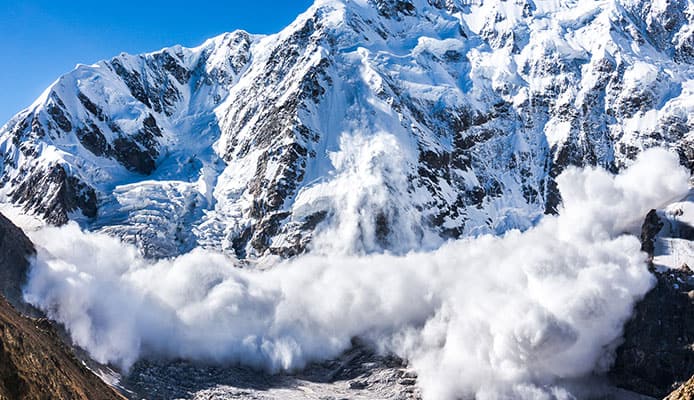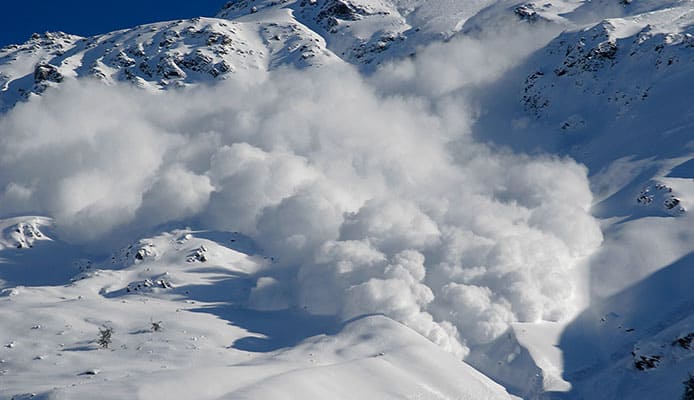
Avalanches may appear to be inevitable occurrences – acts of Mother Nature. While this is partly true, there are things that one can do to aid with avalanche prevention.
If you are just getting started with skiing or you have just purchased your first all-mountain snowboard, you may not know what you need to do to prevent the avalanches. In this article, we will focus on showing you how to prevent avalanches.
Top Avalanche Prevention Tips You Should Know
Compared to surviving an avalanche, preventing one is far easier. For this reason, master the following avalanche prevention tips before you think of getting started with snowboarding:
1. Get Trained
Even if you invest in all the avalanche rescue gear you can get, without proper training, you won’t have the ability to use the gear at the right time. The most ideal way to learn how to prevent avalanches and stay safe is to spend some time with experts – people who have already condensed the important information and knowledge you need.
This is not about going back to school and spending numerous hours studying – a few days of theoretical and practical training should equip you with the following crucial skills:
- Identifying unfavorable/favorable terrain
- Understanding important rescue techniques
- Risk assessment process implementation
- How to use the rescue gear
2. Be Informed
For anyone who loves to wear a ski jacket, the foundation of risk management lies in understanding 3 key areas – terrain, snowpack, and the weather. Before donning your snowboard jacket, check the weather forecasts, avalanche bulletins, and anything else which can help you assess the avalanche risk.
It is worth noting that relying on third-party sources may not always be a good idea. Relearn how to make use of the powerful tools of observation and perception to study your environment.
3. Invest in the Right Gear
Aligning your skill level with the risk level is crucial. You should focus on choosing your avalanche safety gear accordingly, keeping in mind that if you are over-equipped, this could create a false sense of security – leading to more risks.
Although you may have all the necessary gear, keep in mind that you should never have to use the rescue gear. However, if avalanche prevention fails, and you end up finding yourself in the rescue situation, you should at least have a shovel, probe, and transceiver in your backpacking backpack.
4. Monitor the Evolving Situation

Observing and monitoring the environment is supposed to be an ongoing process. It should not stop after the initial risk assessment. Some of the visible warning signs you should recognize include:
- The ground feels hollow under your snowboard boots.
- Cracks start forming around your skis or feet.
- You see evidence of previous avalanche slides.
- You see an avalanche happens.
- You hear the “whumping” sound while walking – this suggests that the snow is currently settling and chances of a slab releasing are extremely high.
- Ball-sized snowballs start rolling down the slope. These indicate that the surface is warming and there is a possibility of a wet-snow slide.
- You see patterns on the snow surface made by strong wind forces. This generally indicates that snow has been transported by the wind and deposited in dangerous drifts that could release.
If you happen to observe the above indicators during your trip, tell the people accompanying you. Irrespective of whether you are a first-time follower or a group leader, you should assume that you know how to prevent avalanches. Do not hesitate to communicate anything you think is important to keep the whole group safe.
5. Be Willing to Adjust the Plan
If you continue with the plan you had crafted earlier on, even after numerous negative indicators, this could increase the chances of being exposed to danger. While you could have worked on the plan for days, keep in mind that avalanche prevention and your safety comes before the plan.
Develop the ability to change the plans based on various conditions, including avalanche warnings, visibility, and weather. As important as the conditions, is the mental and physical state of the people who are exploring the snow with you. Keep checking for a change in signs in all areas and come up with a new plan on how to move on.
6. Do Not Ski or Snowboard Alone
Even if you are an expert and you own all the necessary cross-country skiing equipment, exploring the snow alone is never a good idea. Accidents do occur. Even as an expert, you could make mistakes. If you find yourself in a situation where you cannot save yourself, you will need someone else to help you out.
Before you embark on your trip, let everyone in the group know of the plan. Ensure that everyone understands both the project objectives and the risks involved clearly. Ensure that everyone agrees with the plan.
You might also like: Perfect Avalanche Shovels
7. Maintain Proper Descending Practice
When descending on a slope, you should descend one at a time. On both the descent and ascent, maintain a safe distance between the members of the group.
Adjust your speed according to the current conditions. If you have to stop, make sure you are stopping only in safe areas. If you do have any doubts, adjust the plan, or hold off.
Since most slopes will feature signage, be sure to respect the signage. Also, respect other fellow backcountry enthusiasts – consider their inputs, irrespective of whether you have been exploring the snow for years or you are just getting started.
Globo Surf Overview
Avalanches are generally common on steep, smooth slopes, without obstacles or tree cover. Unfortunately, these are the areas where backcountry enthusiasts prefer to use for hiking, snowboarding, and skiing. This makes avalanches in areas where snow sports enthusiasts are likely to be inevitable.
For your own safety and the safety of the group, you need to know how to prevent avalanches. The avalanche prevention tips in this article should help improve your safety. It is worth noting that avalanche prevention does not always work. For this reason, carry safety gear and have people with you, who can help, in case you find yourself in an avalanche.
Snow Winter Gear Reviews:
- Women’s Ice Skates
- Avalanche Airbag
- Bluetooth Beanies
- Snow Tubes
- Down Vests
- Avalanche Probes
- Snow Toys

